


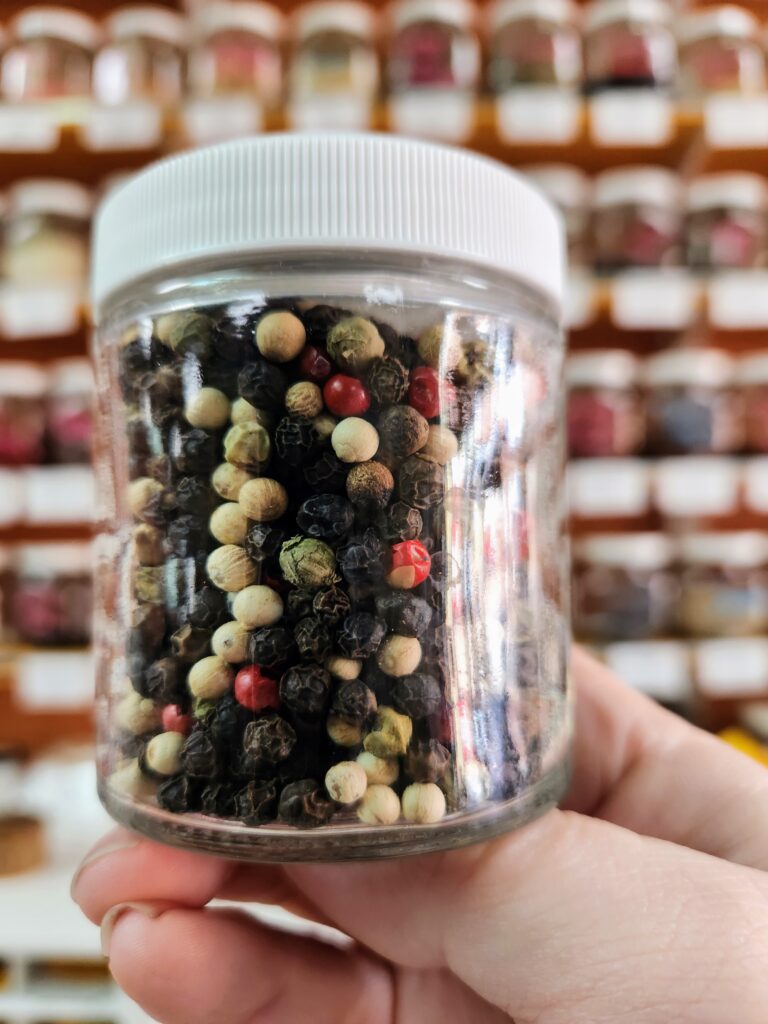
The first thing you see when entering SpiceTopia is our SpiceWall with 100s of spices! And that SpiceWall features five different peppercorns + several pepper blends.
We understand it can all be a bit overwhelming! A few of the questions about pepper that come up over and over include:
Let’s dive into the world of peppercorns to answer these questions and more!
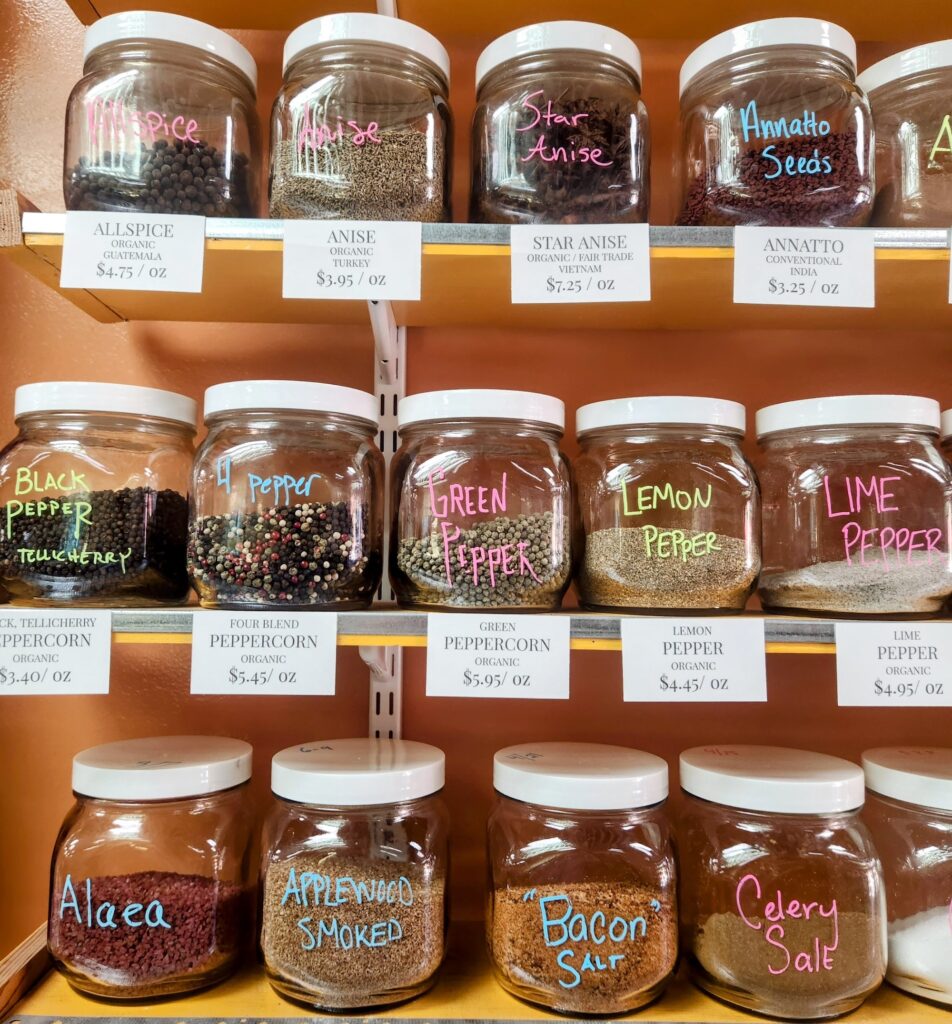
Black, green, and white peppercorns all come from the Piper nigrum plant. Each of these peppercorns are harvested and processed differently giving each one its own flavor profile. These are the peppercorns which started the spice trade around the world!
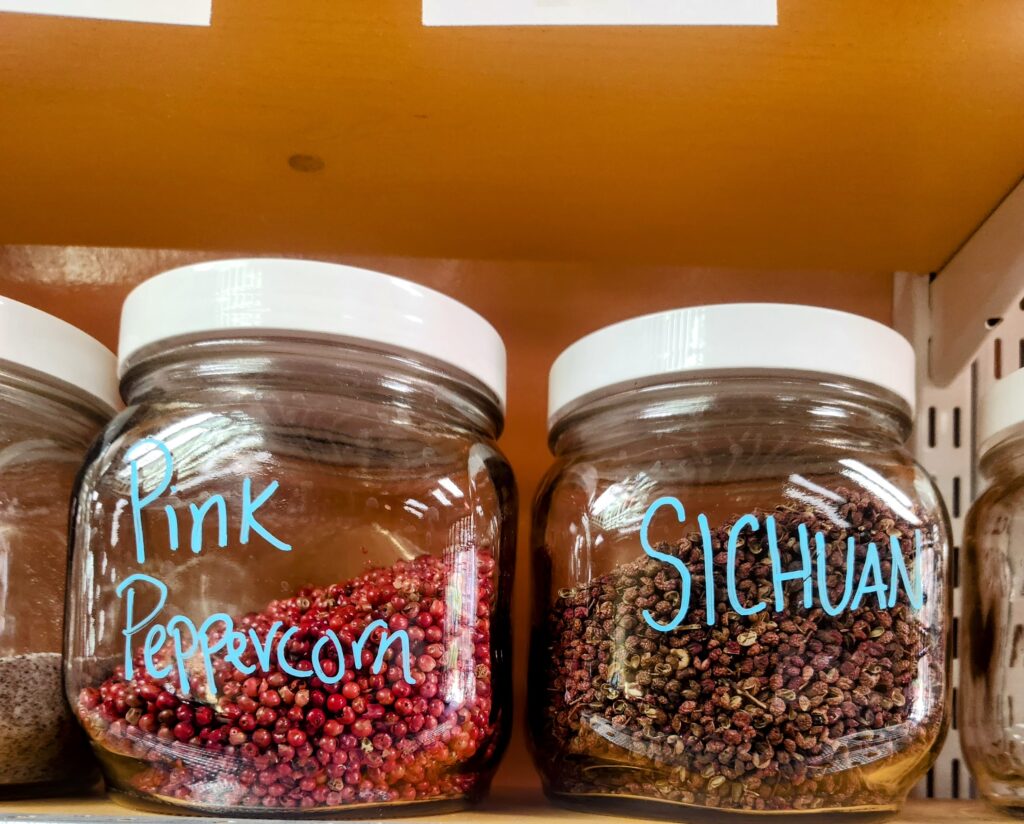
And then we come to Sichuan Pepper and Pink Peppercorns which are not actually related to the Piper nigrum plant at all! In different cuisines, these peppers are used much like peppercorns, so just as we include them with peppercorns on our SpiceWall, we’ll include them in this guide.
While peppercorns are often considered berries and even sometimes referred to a seeds, they are actually drupes. To understand just what a drupe is, think of a stone fruit which is one large seed surrounded by flesh. In a peppercorn, that layer of flesh is what contains piperine, the essential oil which makes pepper uniquely pepper!
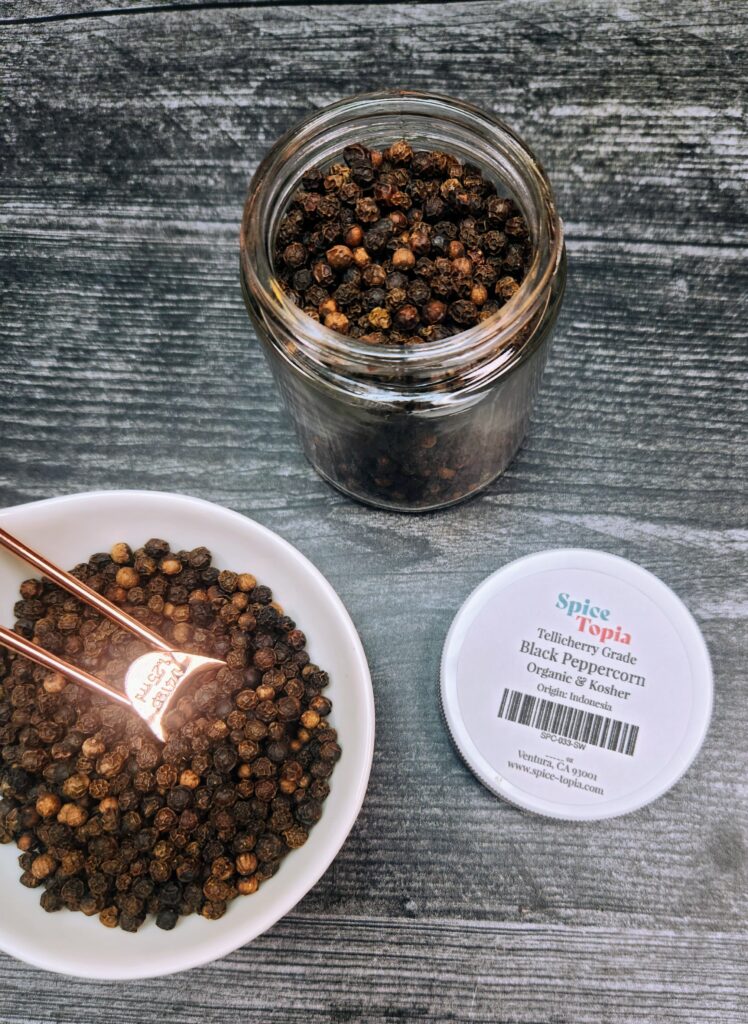
Around the world, more black pepper is used than any other spice! Native to India, the Piper nigrum plant is a vining shrub that thrives in tropical regions of the world.
Black pepper is harvested before it has had a chance to fully ripen. After being picked, it is briefly fermented before being dried. This process gives the berries their signature black and wrinkled appearance.
What does Black Pepper taste like?
Black pepper has a hot and biting flavor that is neither savory nor sweet. Rather its flavor is pungent and biting. This flavor tends to enhance other flavors and goes well with both sweet and savory dishes. Black pepper is known for its strong fruity, warm, woody, and lemony aroma. It is believed this aroma is actually the component of pepper that enhances other flavors so well.
As with all peppercorns, both the flavor and aroma of black pepper quickly dissipates after grinding, so it is best to buy whole peppercorns and grind as needed.
Just like with teas and wines, the flaver of any peppercorns differ depending on where they are grown. In the world of pepper, the Wyanad district on the Malabar coast of India is considered the highest quality producer of pepper. And Tellicherry pepper is the highest grade of black pepper grown in that region of India.
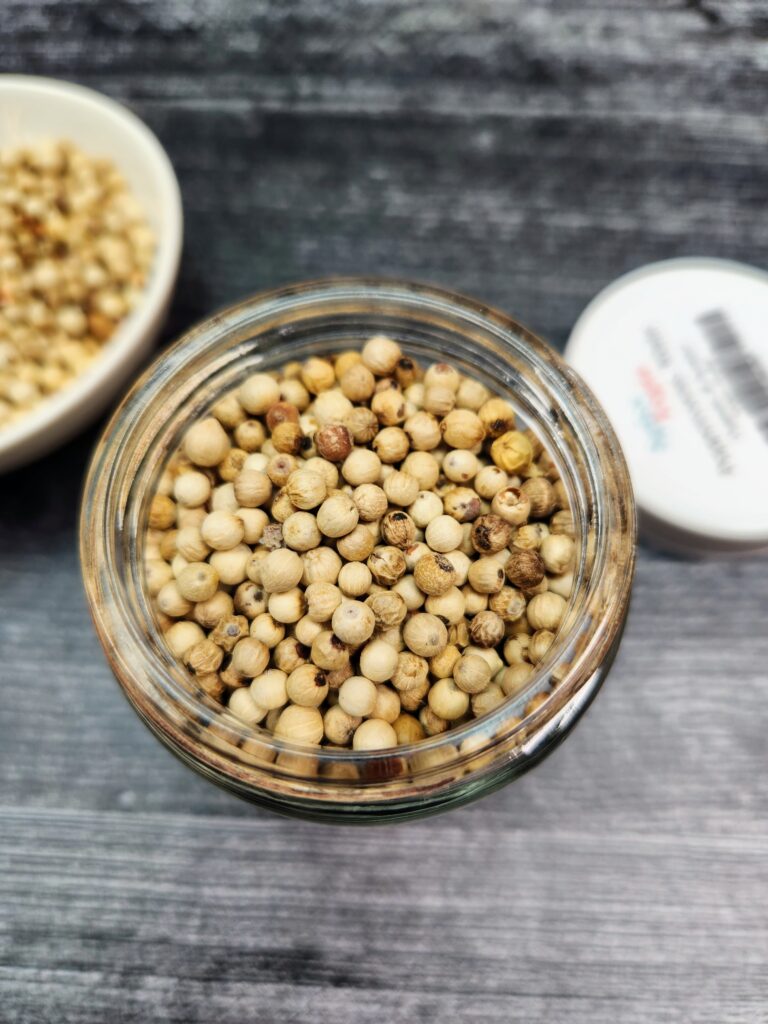
White peppercorns are harvested when they are just barely ripe. After harvest, these ripe berries are soaked and fermented in water which removes the outer skin. This skin is where peppercorns hold their essential oils which provide peppercorns with their unique aroma.
What does White Peppercorns taste like?
Therefore, white peppercorns have less of the aroma that make black peppercorns so sought after, but since white peppercorns are picked when ripe they have more of the hot biting flavor than black peppercorns. And white peppercorns have a sweetish afternote not found in black peppercorns.
In classic French cooking, white peppercorns are used for aesthetic reasons. Black pepper floating around in a cream soup or bechamel sauce isn’t so pretty. While in Chinese and other Asian cuisines, the extra bite of white pepper is preferred to black pepper. For example, that spicy flavor in hot and sour soup comes from white pepper.

Like black peppercorns, green peppercorns are harvested before they are fully ripe.
Instead of the fermentation and drying process that produces black peppercorns, green peppercorns are instead freeze-dried. (In the past, green peppercorns were treated with sulfur dioxide and then dehydrated to keep that green color. Modern technology has changed the process for the better.) Freeze-drying the immature peppercorns locks in their green herbaceous flavor.
Since green peppercorns are dehydrated, they have been traditionally used in dishes with liquids such as soups, stews, and sauces. The liquid in these dishes provide rehydration for the green peppercorns.
What do Green Peppercorns taste like?
Green peppercorns are very aromatic, but have a much milder flavor than black and white peppercorns.
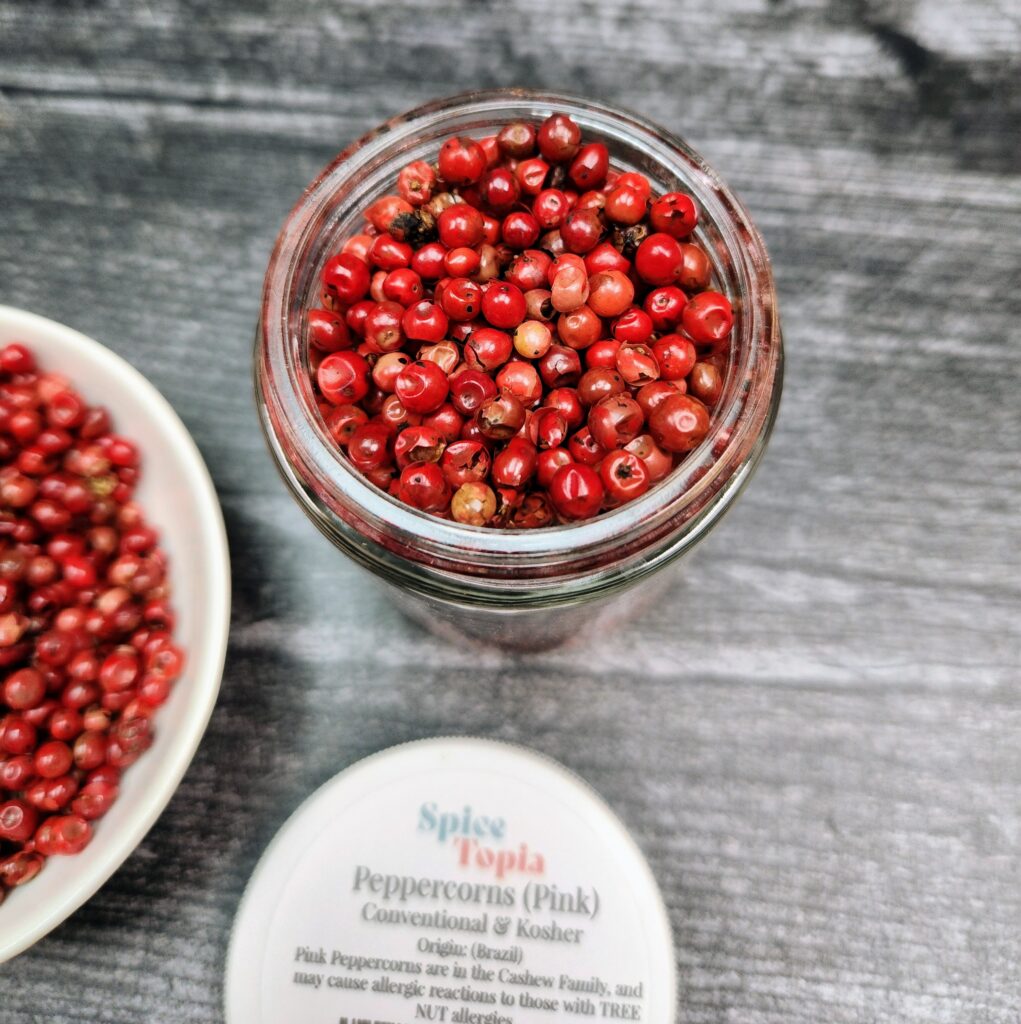
Pink peppercorns vs black peppercorns
Pink peppercorns aren’t peppercorns at all! Instead pink peppercorns come from the Brazilian pepper tree native to Brazil, Argentina, and Paraguay. And unlike peppercorns from the Piper nigrum plant, pink peppercorns are actually a berry.
A pink peppercorn is simply dried or freeze-dried after harvest. After being dried, the pink peppercorn is brittle with a papery outer shell. The whole dried berries are easy to grind or crush in a mortar and pestle when needed.
These berries are often classified as pepper, because although pink peppercorns are not from the Piper nigrum plant, they do contine piperine!
What do Pink Peppercorns taste like?
Pink peppercorns have a fruity flavor with notes of pine. Some compare its sweet aromatic flavor with a milder juniper berry.
Pink peppercorns pair well with fattier foods such as salmon and game meat. We also like it with stone fruit – it makes a wonderful addition to a peach cobbler or plum tart.
Pink Peppercorns are an integral flavor in our Ventura Spice: Two Trees Blend!
Another pink peppercorn questions, we get asked is, “ Are pink peppercorns nuts?”
No, pink peppercorns are not nuts, but they are related to cashews. Something to consider if you are allergic to tree nuts.
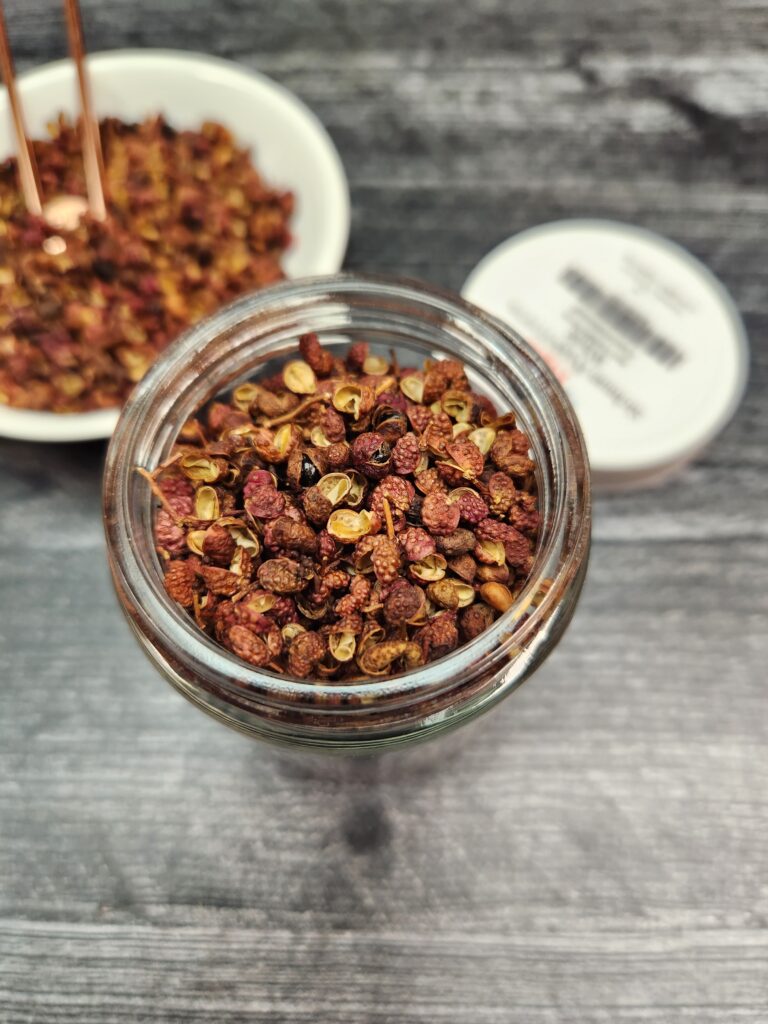
Like Pink Peppercorns, Sichuan Peppercorns are not related to the Piper nigum plant and they are berries.
Sichuan peppercorns are berries which grow on the prickly ash tree. The ripe berries are picked, dried, and then split open to remove the bitter black seeds inside.
What do Sichuan Peppercorns taste like?
Sichuan peppercorns have a fruity aroma with a tangy, sharp, woody, citrus flavor. Although the flavor of sichuan peppercorns are complex, they are more well known for the numbing or tingling mouth feel. Sichuan cuisine is known for its spicy flavors and sichuan peppercorns numbing effect allows one to eat more spicy food!
Sichuan Peppercorns are a key ingredient in
When cooking, add sichuan peppercorns to roasted, grilled, and even deep fried meats and seafood. It’s also a nice addition to stir fried vegetables. In Japan, it is also used as a table spice where it is sprinkled on foods as one is eating them.
At SpiceTopia, we have a lot of fun creating blends using all of the peppers mentioned above. And unlike a lot of grocery store blends, our pepper blends are blended fresh and often. This means we can avoid adding any preservatives and extra flavor enhancers while still ensuring they are packed full of flavor.
A few of our favorite blends include:
Which peppercorns have you tried? Which one do you enjoy most?
Find all our peppercorns and pepper blends at
Tag @spicetopia on Instagram and Hastag it #spicetopia so we can see all your recipes.
Pin this recipe and share it with your followers.
Organic, Fair-Trade, Ethically Sourced, Created with Love Spices, Teas, and Locally Crafted Foods
Thank you for visiting our site!